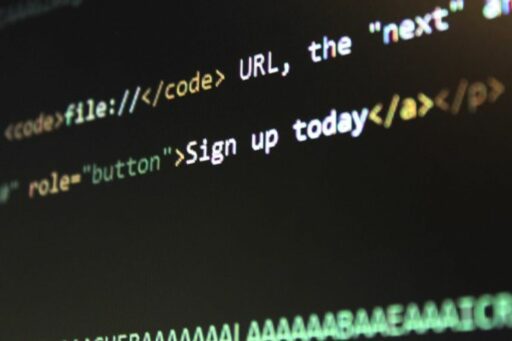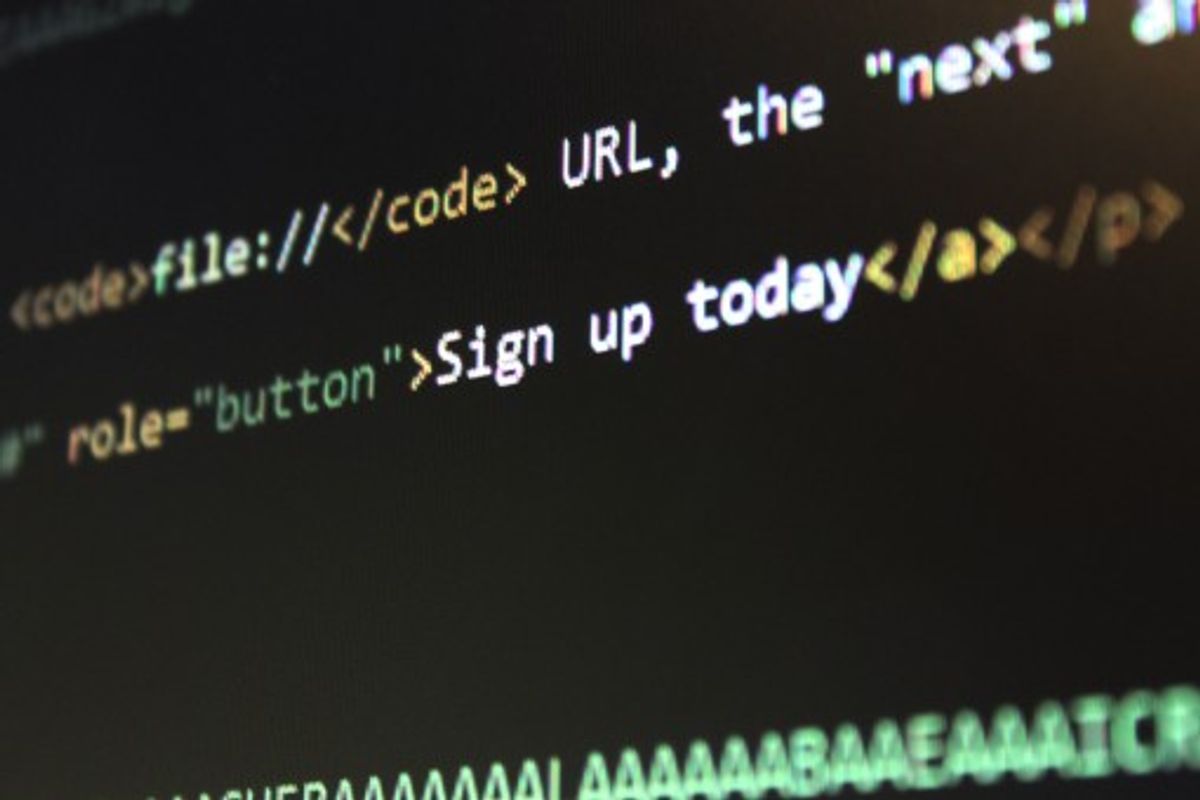Table of Contents
In the world of C programming, understanding data types is fundamental to writing efficient and effective code. Data types are the building blocks that define the kind of data a variable can hold and the operations that can be performed on that data. This article delves into the basics of data types in C, exploring the various categories, their modifiers, and the operations associated with them, as well as their implications for memory management.
Key Takeaways
- C offers basic data types such as int, char, float, and double, each serving a specific purpose in representing simple values.
- Modifiers like signed, unsigned, short, and long alter the range and storage size of the basic data types to accommodate different requirements.
- Data types determine the set of operations that can be performed on variables, such as arithmetic, comparison, and logical operations, and also influence memory allocation.
- Beyond basic types, C includes derived data types like arrays and pointers, enumeration types, and the special void data type, each with unique applications.
- Understanding pointers and optimizing memory usage are crucial for managing complex data types and ensuring efficient memory management in C programs.
Fundamental Data Types in C

Integer Type (int)
The int data type in C is fundamental for representing whole numbers, such as -1, 0, and 42. It is a versatile data type used in various scenarios, from simple arithmetic to controlling loop iterations. The range of values for an int can vary depending on the system, but typically it spans from -2,147,483,648 to 2,147,483,647, occupying 4 bytes of memory.
Common usage scenarios for the int data type include loop iterations, memory allocation, and representing error codes or user input.
Understanding the range and size of integer types is crucial for efficient programming. Below is a table summarizing the ranges and memory sizes for different integer types in C:
| Data Type | Format Specifier | Range | Memory Size (in bytes) |
|---|---|---|---|
| int | %d | -2,147,483,648 to 2,147,483,647 | 4 |
| short int | %hd | -32,768 to 32,767 | 2 |
| unsigned int | %u | 0 to 4,294,967,295 | 4 |
| unsigned short int | %hu | 0 to 65,535 | 2 |
| long int | %ld | -2,147,483,648 to 2,147,483,647 | 4 |
| unsigned long int | %lu | 0 to 4,294,967,295 | 4 |
| long long int | %lld | -(2^63) to (2^63)-1 | 8 |
| unsigned long long int | %llu | 0 to 18,446,744,073,709,551,615 | 8 |
When working with integers, it’s important to choose the appropriate type based on the required range and memory considerations.
Character Type (char)
The char data type in C is designed to store individual characters such as ‘A’, ‘3’, or ‘#’. Each character is stored in a single byte of memory and is typically represented using ASCII values. Characters must be enclosed in single quotes when assigned to a char variable.
To print a character stored in a char variable, the %c format specifier is used in functions like printf. For example:
char myLetter = 'S';
printf("%c", myLetter);
This will output the character ‘S’. It’s important to note that while characters are represented by ASCII values, they are not surrounded by quotes when using these values directly.
Characters and their corresponding ASCII values can be manipulated just like integers, allowing for operations such as addition and subtraction to alter the character’s value.
Floating Point Type (float)
The float data type in C is essential for representing decimal numbers with single-precision. It is particularly useful when a balance between the range of values and the memory usage is required. A float typically occupies 4 bytes of memory, which allows it to represent a wide range of decimal values, albeit with limited precision.
When precision is more critical than memory efficiency, the double data type, which occupies 8 bytes, may be a better choice. However, for many applications, float provides an adequate level of precision. For example, declaring a float variable is straightforward:
float variable_name;
And initializing it with a value is just as simple:
float myNum = 6.85;
printf("%f", myNum); // Outputs: 6.850000
While the float data type can represent a broad range of numbers, it’s important to remember that its precision is not infinite. For very large or very small numbers, double or long double may be more appropriate to maintain precision.
Double Precision Type (double)
The double data type in C is essential for situations where the precision of float is insufficient. Double variables have a precision of about 15 decimal digits, which is significantly higher than the six to seven decimal digits offered by float. This makes double the preferred choice for calculations requiring high precision. However, it’s important to note that a double occupies 8 bytes of memory, which is twice as much as a float.
In terms of range, double can handle numbers from approximately 1.7E-308 to 1.7E+308, making it suitable for very large or very small values. When declaring a double variable, the syntax is straightforward: double variable_name;.
While double provides greater precision and a wider range, it also requires more memory. This trade-off must be considered when designing programs that are memory-sensitive or when processing large datasets.
To set the decimal precision in C when working with double, you can use the %lf format specifier in the printf function. For example:
int main() {
double num = 20.63;
printf("%lf", num);
return 0;
}
This will output 20.630000, demonstrating the precision that double can maintain.
Modifiers and Variable Ranges

Signed and Unsigned Modifiers
In C programming, modifiers are used to alter the meaning of base data types to fit various situations more precisely. The signed and unsigned modifiers are particularly important when dealing with integer types. A [signed int](https://www.geeksforgeeks.org/difference-between-unsigned-int-and-signed-int-in-c/) can represent both positive and negative values, whereas an unsigned int is used for non-negative integer values only. This distinction is crucial for optimizing the use of memory and ensuring the correct representation of data.
For example, using an unsigned int is ideal when you know the value will never be negative, such as when counting items or indexing arrays. Here’s a simple illustration of how these modifiers are used in code:
int a = 9; // Signed integer with positive data
int b = -9; // Signed integer with negative data
unsigned int c = 89U; // Unsigned integer
The choice between signed and unsigned integers can have significant implications for the behavior of arithmetic operations and comparisons.
Understanding the range of values that can be represented by each modified type is also essential. Below is a table summarizing the ranges for different integer types with their respective modifiers:
| Data Type | Format Specifier | Range | Memory Size (bytes) |
|---|---|---|---|
| int | %d | -2,147,483,648 to 2,147,483,647 | 4 |
| unsigned int | %u | 0 to 4,294,967,295 | 4 |
| short int | %hd | -32,768 to 32,767 | 2 |
| unsigned short int | %hu | 0 to 65,535 | 2 |
| long int | %ld | -2,147,483,648 to 2,147,483,647 | 4 |
| unsigned long int | %lu | 0 to 4,294,967,295 | 4 |
Short and Long Modifiers
In C, the size and range of integer data types can be adjusted using short and long modifiers. These modifiers act as prefixes to the standard int type, creating variations that can store different ranges of values. For example, a short int typically requires less memory than a standard int, making it suitable for smaller ranges of numbers.
The long modifier extends the range and size of an integer. It is often used when the number to be stored exceeds the range of a standard int. A long int or simply long can represent much larger numbers. Similarly, long long int provides an even greater range, suitable for applications requiring very large integer values.
Here is a table summarizing the memory sizes and value ranges for modified integer types:
| Data Type | Format Specifier | Range | Memory Size (bytes) |
|---|---|---|---|
| short int | %hd | -32,768 to 32,767 | 2 |
| unsigned short int | %hu | 0 to 65,535 | 2 |
| long int | %ld | -2,147,483,648 to 2,147,483,647 | 4 |
| unsigned long int | %lu | 0 to 4,294,967,295 | 4 |
| long long int | %lld | -(2^63) to (2^63)-1 | 8 |
| unsigned long long int | %llu | 0 to 18,446,744,073,709,551,615 | 8 |
Choosing the right type and modifier is crucial for efficient memory usage and preventing overflow errors. It’s important to consider the range of data that will be handled when selecting a data type for your variables.
Determining the Size and Range
In C, the size and range of data types are defined by the language standard and can vary across different platforms and compilers. Understanding the size and range of data types is crucial for writing portable and efficient code.
To determine the size of a data type, the sizeof operator is used. For example, sizeof(int) will return the size of an integer in bytes. The range, however, depends on whether the data type is signed or unsigned. A signed integer on a 32-bit system typically has a range from -2,147,483,648 to 2,147,483,647.
The choice of data type should be informed by the variable’s intended use and the required precision. Using a data type with a larger range than necessary can lead to wasted memory, while a smaller range might cause overflow errors.
Here is a table showing the typical sizes and ranges for some fundamental data types in a 32-bit system:
| Data Type | Size (bytes) | Range |
|---|---|---|
| int | 4 | -2,147,483,648 to 2,147,483,647 |
| float | 4 | Approximately ±3.4e±38 |
| char | 1 | -128 to 127 |
| double | 8 | Approximately ±1.7e±308 |
Remember that these values are not fixed and can vary, especially when dealing with different architectures or compilers. It is always a good practice to check the specific limits for the system you are working on.
Operations on Data Types
Arithmetic Operations
In C programming, arithmetic operations are fundamental for performing calculations on data. These operations include addition (+), subtraction (-), multiplication (*), and division (/). Each operation has a corresponding operator that is used in expressions to compute values.
Arithmetic operations follow a specific order of precedence, which determines the sequence in which operations are performed in an expression. This hierarchy is crucial for obtaining correct results, especially in complex calculations.
Here is a list of arithmetic operators with their precedence, from highest to lowest:
- Multiplication (
*) and Division (/) - Addition (
+) and Subtraction (-)
It’s important to use parentheses to explicitly define the order of operations when the default precedence does not match the intended calculation.
Comparison and Logical Operations
In C programming, comparison and logical operations are fundamental for decision-making and controlling the flow of execution. Comparison operators, such as ==, !=, <, >, <=, and >=, allow you to compare two values, returning a boolean result. Logical operators, including && (logical AND), || (logical OR), and ! (logical NOT), are used to combine or invert boolean expressions.
When performing operations, it’s crucial to understand operator precedence to ensure the desired outcome. The ternary operator ?: provides a shorthand for if-else statements, allowing for compact code when dealing with simple conditions.
Remember, when combining comparison and logical operations, always consider the readability and maintainability of your code.
Here is a list of common comparison and logical operators in C:
==Equal to!=Not equal to<Less than>Greater than<=Less than or equal to>=Greater than or equal to&&Logical AND||Logical OR!Logical NOT?:Ternary operator
Type Casting and Conversion
Type casting in C is essential when you need to convert a variable from one data type to another. This is particularly useful when you want to ensure that operations between different types are performed correctly. Implicit type casting occurs automatically when the conversion is from a smaller to a larger data type, such as from int to float. However, explicit type casting must be used when converting from a larger to a smaller data type, or from a floating-point to an integer type.
For explicit type casting, the desired type is placed in parentheses before the variable. Here’s a simple example:
float f = 3.14;
int i = (int)f; // Explicitly cast float to int
When performing type casting, it’s important to be aware of the potential for data loss. For example, casting a float to an int will truncate the decimal part.
Type conversion can also occur between objects and primitive data types, often using functions or methods provided by C. Below is a list of common type conversion functions in C:
atoi()– Converts a string to an integer.atof()– Converts a string to a floating-point number.strtol()– Converts a string to a long integer.strtod()– Converts a string to a double.
Understanding and using type casting and conversion correctly is crucial for the accuracy and efficiency of your C programs.
Complex Data Types and Their Uses

Derived Data Types
Derived data types in C are constructed from the fundamental data types and provide a means to aggregate and manage complex data structures. Structures, for instance, allow grouping of variables under one name for easy manipulation. A struct can hold members of various data types, such as an employee record with a name, age, and salary.
Unions are similar to structures but with a key difference: all members share the same memory location. This makes unions useful when you need to store different data types in the same memory space but not simultaneously.
Arrays are another form of derived data type, enabling the storage of multiple items of the same type in a contiguous block of memory. They are particularly useful when dealing with sequences of elements, such as a list of integers or characters.
Derived data types extend the functionality of basic data types, allowing for more complex data representation and manipulation within C programs.
Pointers, while not always listed as a derived type, are crucial in C as they provide direct memory access and support dynamic memory management. They are often used in conjunction with other derived data types to create complex data structures like linked lists and trees.
Enumeration Data Type
In C programming, the enumeration data type, or enum, is a user-defined type that consists of a set of named integer constants. Enums are particularly useful when you need to represent a collection of related constants with readable names, enhancing code clarity and maintainability.
Enums are defined using the enum keyword, followed by a set of unique identifiers enclosed in curly braces. Each identifier in the enumeration list is associated with an integer value, starting from 0 by default, and incrementing by 1 for each subsequent identifier. However, you can explicitly assign values to the identifiers as well.
Enums can simplify code by replacing numeric constants with meaningful names, making the code easier to read and less prone to errors.
Here is an example of defining and using an enumeration in C:
enum Day {SUNDAY, MONDAY, TUESDAY, WEDNESDAY, THURSDAY, FRIDAY, SATURDAY};
enum Day today = WEDNESDAY;
printf("Today is day number %d", today);
In this example, today is a variable of the enum Day type, and it is assigned the value associated with WEDNESDAY. When printed, it will output the integer value corresponding to WEDNESDAY in the enumeration list.
The Void Data Type
In C programming, the void data type plays a unique role. It is used to indicate that a function is not supposed to return any value. For instance, the main function in a program can be defined with a void return type, signifying that it does not return a value upon completion. A void pointer, also known as a generic pointer, is a special type of pointer that can point to any data type.
The void data type is essential when a function’s purpose is to perform an action rather than to compute and return a value.
Void pointers are particularly useful because they provide the flexibility to point to any data type. This is beneficial in situations where the type of data is not known beforehand or can change. A void pointer can be typecasted to any other pointer type, which allows for dynamic data structures and functions that can operate on different types of data.
Here is an example of how a void pointer might be used in C:
void *ptr;
int x = 10;
ptr = &x; // ptr now holds the address of x
In this example, ptr is a void pointer that is assigned the address of an integer variable x. Later, ptr can be typecasted to an int* to retrieve the value of x.
Memory Management and Data Types

Memory Allocation for Different Data Types
In C programming, memory allocation is directly influenced by the data types used. Each data type requires a specific amount of memory, which is determined at compile time. For instance, an int typically occupies 4 bytes of memory, while a char only requires 1 byte. This allocation is crucial for the efficient use of system resources and impacts the overall performance of the application.
Understanding how data types affect memory allocation is essential for optimizing code. Smaller data types can be used for variables that do not need to store large values, thereby saving memory and potentially increasing the application’s speed. Here’s a brief overview of the memory required by some fundamental data types in C:
| Data Type | Memory (bytes) |
|---|---|
| int | 4 |
| char | 1 |
| float | 4 |
| double | 8 |
Data types not only determine the size of memory allocated but also define how data is represented in binary form. This ensures that the computer can correctly manipulate and store the values.
It’s also important to consider the data structure alignment and how it affects access and manipulation of data in memory. Proper alignment can lead to more efficient data processing and should be taken into account when designing data structures and algorithms.
Understanding Pointers and Data Types
In C programming, pointers are a fundamental concept that intertwine with data types. A pointer is essentially a variable that holds the memory address of another variable. The type of data that the pointer refers to must be specified, as it dictates how the memory is accessed and manipulated. For example, an int * is a pointer to an integer, while a char * is a pointer to a character.
The size of a pointer is consistent across data types on a given machine, typically 8 bytes on a 64-bit system. However, the size of the data that the pointer points to can vary. This is why understanding the relationship between pointers and data types is crucial for memory management.
Pointers are powerful tools in C that allow for direct memory access and manipulation, which can lead to more efficient and dynamic programs.
Here is a basic syntax for declaring a pointer in C:
data_type *pointer_name;
And an example of using pointers:
int number = 120;
int *p = &number;
printf("Value at pointed location: %d\n", *p);
Remember, when using pointers, the & operator is used to obtain the address of a variable, and the * (dereference operator) is used to access the value at the address pointed to by the pointer.
Optimizing Memory Usage with Data Types
Efficient memory usage is paramount in programming, and the choice of data types plays a critical role in this aspect. Choosing the right data type for a variable can significantly reduce the memory footprint of an application. For instance, using smaller data types for variables that don’t require large ranges can lead to both memory savings and performance gains.
Data types are not just about storing values; they are about choosing the most efficient way to represent information within the constraints of memory and processing power.
Understanding the memory allocation for different data types is essential for optimization. Here’s a quick reference for the amount of memory typically allocated to fundamental data types in C:
| Data Type | Memory (bytes) |
|---|---|
| char | 1 |
| int | 4 |
| float | 4 |
| double | 8 |
By being mindful of the data types used, developers can ensure that their code is not only functional but also optimized for the environment in which it operates. This includes considering the portability of code across different platforms and the compatibility with external libraries or hardware.
Conclusion
Throughout this article, we’ve explored the fundamental data types in C—int, char, float, and double—and their significance in programming. We’ve seen how data types are the building blocks that define the kind of values variables can hold and the operations that can be performed on them. Understanding data types is crucial for efficient memory allocation and for writing robust C programs that perform as intended. Whether you’re dealing with simple values or complex structures, the correct use of data types is essential. As you continue to delve into C programming, keep in mind the importance of these data types and the role they play in the foundation of your code.
Frequently Asked Questions
Why do we need different data types in C programming?
Different data types in C allow for the efficient and accurate representation and manipulation of various forms of data such as integers, floating-point numbers, characters, and more, enabling diverse operations and memory usage.
Can I change the data type of a variable after its declaration in C?
No, once a variable has been declared in C, its data type cannot be changed. To use a different data type, a new variable must be defined with the desired type.
What are the fundamental data types in C?
The fundamental data types in C are int for integers, char for characters, float for floating-point numbers, and double for double-precision floating-point numbers.
What does the signed modifier mean in C?
The signed modifier in C indicates that a variable can contain both negative and positive values.
What are derived data types in C?
Derived data types in C include arrays, pointers, structures, and unions, which are built from the basic data types to handle more complex data structures.
What is the purpose of the void data type in C?
The void data type in C is used to indicate that a function does not return a value or to declare generic pointers that can point to any data type.





